How the secrets of the Pilbara region were unlocked
The remote Pilbara region used to lay claim to Western Australia’s tallest peak.
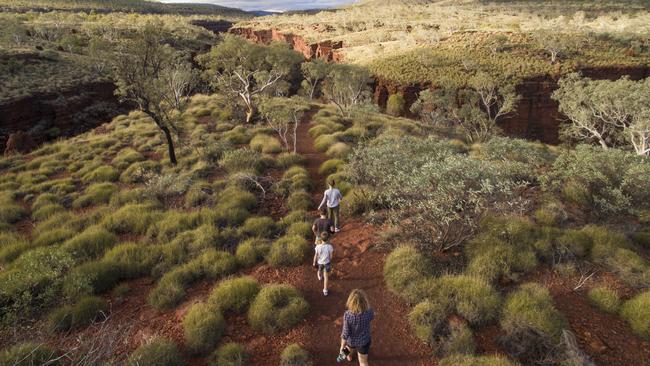
I’ve come to the Pilbara to be swallowed up by its very being, because while on the surface Karijini National Park may look a lot like any other outback landscape – vast, mostly flat, empty and therefore beguiling – it also has places that are descents into wonderment. Plus there’s a geographical quirk that affords a loftier perspective on this rock-hard landscape, a location that used to be Western Australia’s highest mountain.
When the guide slips this morsel into the campfire briefing of our next-day activities, for a moment I think: “No, surely they didn’t.” The region’s iron ore resources may not see out the century – the Minerals Council of Australia has recently estimated there’s only about 65 years’ worth left – but that’s no excuse to be chomping down on the mountains.
No, the real story of Punurrunha or Mt Bruce (1235m, always has been, hopefully always will be) is one of just how long it has taken to unveil the secrets of this remote region, 1400km north of Perth, and one that has usually played second fiddle to the big-ticket attractions of its Kimberley neighbour.
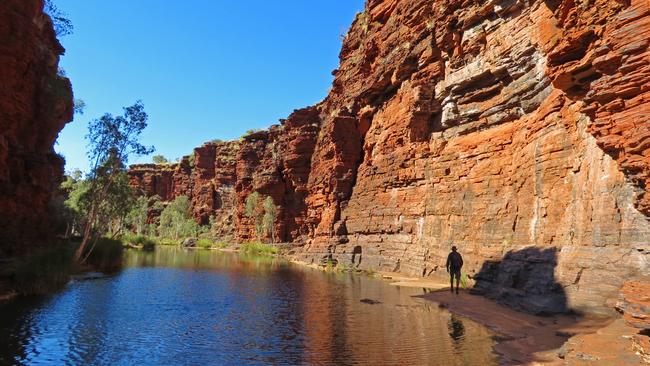
In the first 140 years of white settlement in WA, no higher peak than Mt Bruce, part of the Hamersley Range, had been detected. Then, in 1967, a government party entered a previously unsurveyed area 60km to the southeast and ran their tape-measure over another peak. Which was how Wirlbiwirlbi or Mt Meharry, at 1253m, usurped Mt Bruce. Not that we’re disappointed with second-best. The 10km return trip is at first a gentle uphill walk before a traverse of a saddle, and it includes a spot called Marandoo View. The long, brown-red gash below us, devoid of the spinifex that otherwise carpets the Pilbara, is Rio Tinto’s Marandoo Mine from which, trailing off into the distance, is a railway. It’s odd to think that anytime soon, the embryo of my next washing machine will be tootling down this line.
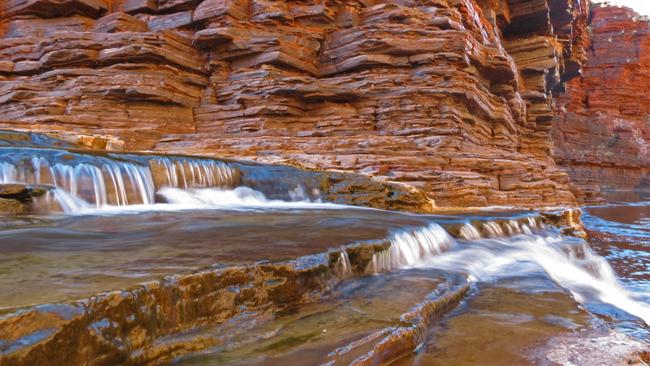
Soon enough, this walk becomes a scramble up giant stepping stones and, at one stage, through a rock chute which, although no Hillary’s Step, takes a degree of negotiating. On what’s essentially a walking holiday, this is a challenge for some of the group, and it takes equal doses of helping hands and polite cajoling to get everyone through. Then we level out again and a 360-degree panorama of Pilbara is ours. As a lunch spot it takes some beating.
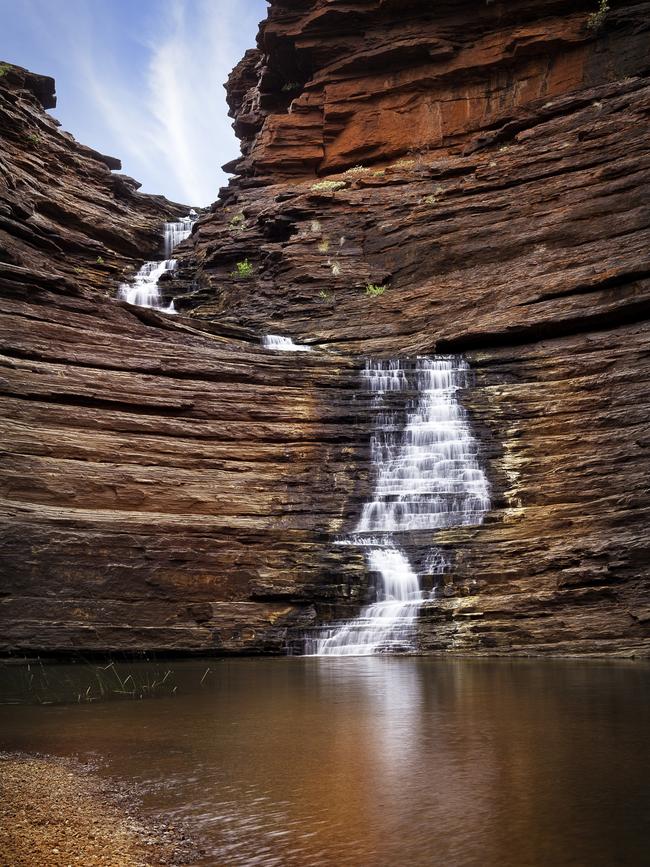
Only the top third of the 625,000ha Karijini, WA’s second largest national park, is set up for visitors, but that’s where the prizes are, and most of our five-day stay is spent in gorges carved by the movement of water through the iron, dolomite and shale to produce some of nature’s greatest swimming pools. In the east of the park, Dales Gorge is bookended by two wonderful waterholes, or you can shower under the spray of the falls in Kalamina Gorge.
But right on the doorstep of Karijini Eco Retreat, with its collection of cabins, glamping tents and campsites, is a quartet of gorges radiating out along the compass points. Beyond the pool at the pointy end of Knox Gorge is a striking leaf-shaped fissure beloved of photographers when the noonday sun turns the rocks fiery red. Meanwhile, Joffre Gorge is a deep amphitheatre, its pool fed by a waterfall.
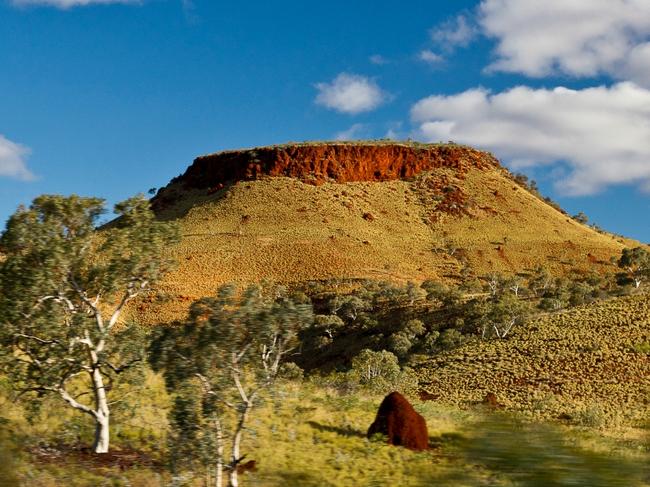
The two stunners are Hancock and Weano. The former needs some agility, especially a narrow section where the best way forward is a spider walk – hands and feet clamped on either wall of a narrow cleft – into the sublime Kermit’s Pool. For the latter gorge, gumption is your best friend. Wading and swimming along a rocky creek, access to Handrail Pool is finally granted via a firm grip of said rail that you straddle to step down into a circular pool of emerald many metres below the rim. A wonder world in the underworld.

To join the conversation, please log in. Don't have an account? Register
Join the conversation, you are commenting as Logout